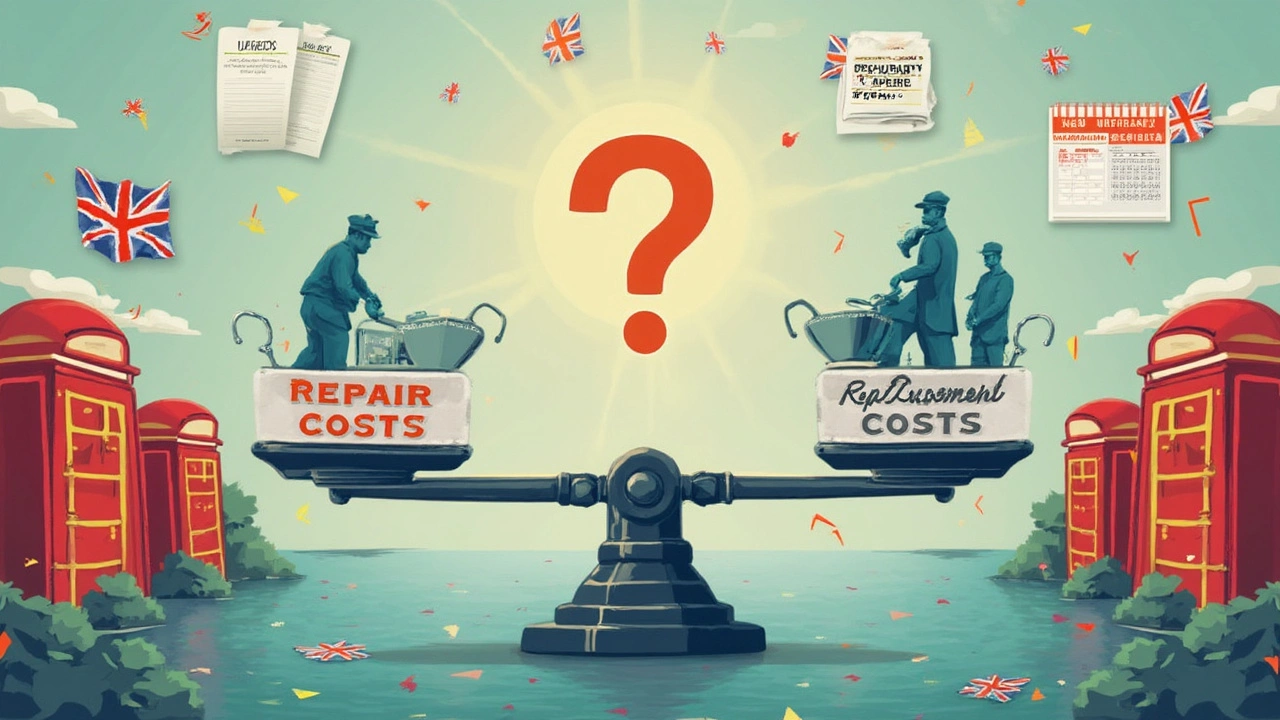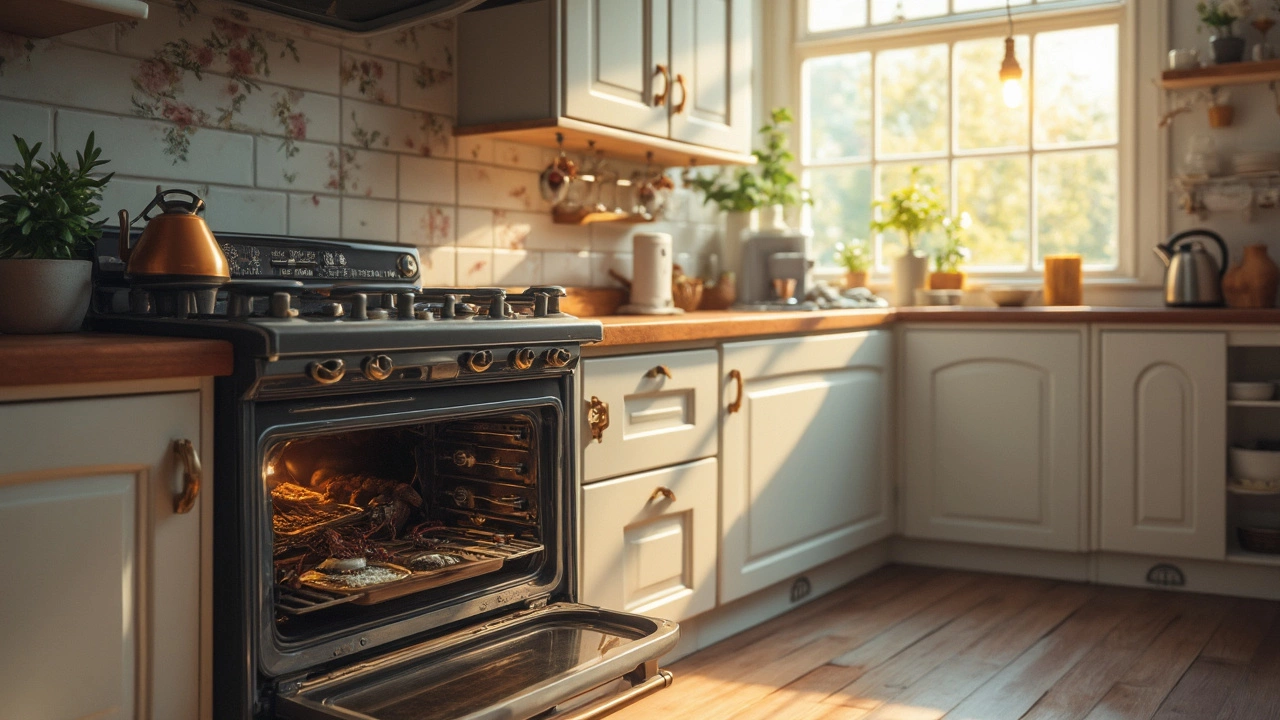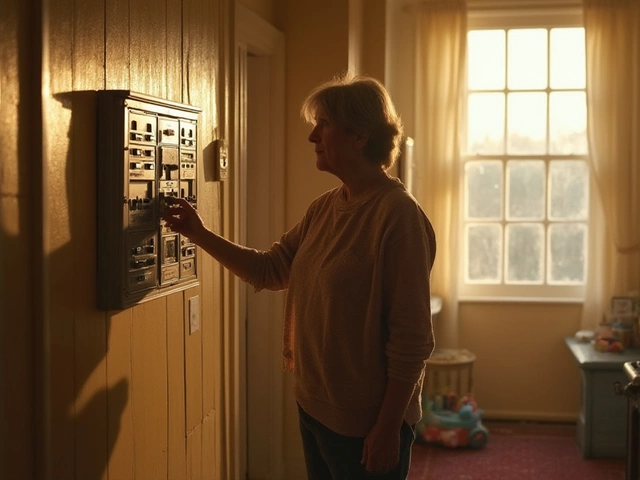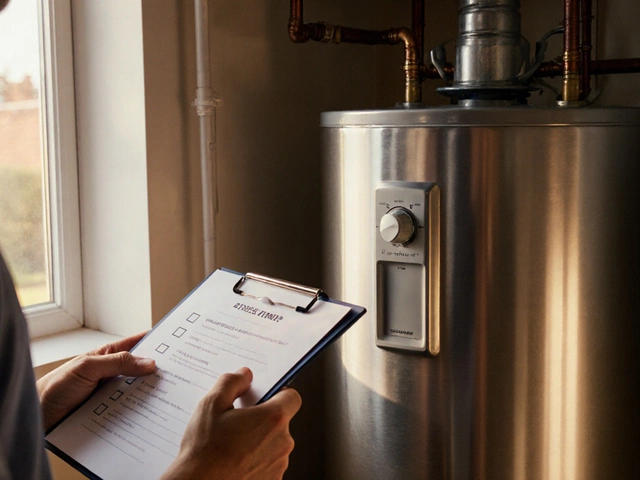Thinking about whether to fix your oven that's just hit the five-year mark? You’re not alone. Deciding when to repair or replace an appliance is one of those head-scratchers that most of us face at some point. So, let's break it down.
First up, consider how long these workhorses usually last. Electric ovens can generally serve you well for 10 to 15 years if you’re lucky and if they’ve been well taken care of. So, at five years, yours is likely in its mid-life crisis. But before rushing to splurge on repairs, how about finding out what might be wrong in the first place?
- Understanding the Lifespan of Your Oven
- Common Issues and Repair Costs
- Cost vs. Replacement: What Makes Sense?
- Energy Efficiency: Old vs. New Models
- DIY Tips and When to Call a Pro
Understanding the Lifespan of Your Oven
Alright, so how long should you realistically expect your electric oven to last? Typically, these trusty kitchen companions clock in anywhere between 10 to 15 years if they're given the occasional TLC. By 'maintenance,' we're talking simple stuff like regular cleanings and maybe dealing with minor hiccups before they become budget-busting disasters.
Now, let's talk specifics. Electric ovens, compared to their gas counterparts, generally last a bit longer due to having fewer parts that get worn out. An interesting tidbit from a study by the National Association of Home Builders states that the average lifespan of household appliances, including electric ovens, is about 13 years. Though, keep in mind, how you use and maintain your oven plays a huge role in stretching that lifespan.
According to the Home Appliance Manufacturers Association, "Regular maintenance and timely repairs can significantly extend an appliance's life, keeping it efficient and reliable for years beyond its typical lifespan."
But let's keep it real. Not all ovens age gracefully. Some models that are notorious for specific design flaws might start acting up sooner than expected. So, if you've got a brand that tends to be reliable, awesome. But if not, it's a good idea to be prepared for a few bumps earlier in the road.
Here's a quick look at what might shorten your oven's lifespan:
- Neglecting regular cleaning and maintenance.
- Ignoring small parts that need replacing, like seals or heating elements.
- Harsh usage, like baking or roasting every day without letting it cool appropriately.
In summary, while reaching that golden 15-year mark might feel like hitting a jackpot, it's totally doable with the right care. Knowing what to expect and how to handle minor issues can save you both time and money. Plus, it’s always satisfying to get the most out of what you’ve paid for.
Common Issues and Repair Costs
When it comes to your electric oven, some problems pop up more often than others, especially as it gets older. Let’s start with a simple breakdown of what you might be facing.
First up, we have heating issues. Maybe your oven isn’t warming up properly, or worse, isn’t heating at all. This is often tied to a faulty heating element or thermostat. Replacing these parts could set you back around $150 to $300, depending on the part prices and labor costs in your area.
Another common headache is a broken oven door. If it won't close fully, your oven can't maintain temperature, which can be a real hassle when cooking. Door repairs might include replacing hinges or the seal, and you’re looking at about $100 to $200 for this fix.
Then there’s the touchpad or control board. Sometimes these can just stop working or become unresponsive, making it impossible to set the oven correctly. Fixing or replacing this can cost anywhere from $200 to $400.
Here’s a quick snapshot of these costs:
| Issue | Repair Cost (Approx.) |
|---|---|
| Heating Element | $150 - $300 |
| Oven Door | $100 - $200 |
| Touchpad/Control Board | $200 - $400 |
The thing is, if repairs start costing over half the price of a new electric oven, it might be time to consider it. This isn’t always black and white, and some parts are worth replacing, while for others, maybe not so much. If you can do some basic troubleshooting first, you might save a few bucks before calling in the pros.

Cost vs. Replacement: What Makes Sense?
Trying to wrap your head around whether to fix your trusty oven or just ditch it for a shiny new model? It's a tough call, especially when you're juggling costs.
Let's start with some cold, hard numbers. Repairing an electric oven often costs around $50 to $400, depending on the issue. If it’s something like a heating element, you're looking at the lower end. But if the control board's gone haywire, then get ready to shell out more.
Now, compare that to buying a new oven, which could set you back anywhere from $400 to over $1,500 for those fancy, high-tech models. The price difference might make repairs seem like a no-brainer, right?
But here's where it gets interesting. Think about the age of your trusty appliance. At five years, weighing repair costs vs. replacement involves considering the oven's potential future lifespan and reliability. If repairs add up to more than half the cost of a new unit, many folks would say it’s time to consider a replacement.
Here’s a quick rule of thumb:
- If the repair costs less than 50% of a new oven's price and the oven isn’t more than halfway through its lifespan, repair might be more sensible.
- If the oven is prone to frequent issues or if repairs are frequent, investing in a new one could save you money (and stress) in the long run.
It's not just about cost, though. Consider energy efficiency too. Newer ovens generally use much less energy, which can actually save you bucks on those hefty electricity bills over time.
Sometimes, manufacturers offer trade-in deals for old appliances, so it’s worth asking around. Factor in both short-term costs and long-term savings to help make the best choice for your budget and peace of mind.
Energy Efficiency: Old vs. New Models
Let's talk energy use – not the most exciting topic, I know, but it can save you some serious dough. So, you’ve got a 5-year-old electric oven; it’s probably not the worst energy hog in your house but compared to the latest ones, it's not winning any awards either.
Here's the deal: newer electric ovens come packed with tech that makes them more energy-efficient. Models made in the past few years often include improved insulation and more accurate temperature control. Both of these help the oven use less energy to do the same job. We’re talking about savings both on your electricity bill and your carbon footprint.
Consider the Energy Star rating, which measures how well a device works relative to its energy use. Unlike older models, the fresh-off-the-shelf ovens are more likely to carry this badge. That means they meet strict energy efficiency guidelines set by the US Environmental Protection Agency.
- Improved Insulation: New models are better at keeping heat inside, which reduces the energy needed to maintain cooking temperatures.
- Convection Mode: The latest ovens often have convection features, cooking food faster and at lower temperatures than conventional ovens.
- Smart Tech: Some of the new fancier options have features like programmable cooking settings or even smartphone connectivity. This can help you optimize cooking times and energy use.
Worried about the cost vs. energy savings if you go for a new one? On average, a new electric oven can cut energy costs by 20-30% compared to models that are a decade old. Even your 5-year-old unit won't quite match up, unless it's exceptionally high-end.
If you're the kind of person who cringes at the monthly electricity bill, investing in a newer model might make sense. But, if your current oven is doing just fine and you don’t notice a huge difference in the bills, maybe stick with what you got.

DIY Tips and When to Call a Pro
Alright, so you're eyeing that oven repair job and wondering if it's something you can tackle on your own or if dialing up a professional makes more sense. Let's weigh those options with some practical tips that might just save you a few bucks—or at least some headaches.
First off, let’s talk easy fixes. If your electric oven isn’t heating up evenly, it might just be grime or leftover gunk on the heating elements. Giving it a good scrub can sometimes do wonders. Just make sure the oven is off and cool before you dive in with that scrubber.
- Check the basics: Is the oven plugged in? This sounds silly, but you wouldn't believe how often it’s the simple things. Also, check your circuit breaker—sometimes it trips and needs a quick reset.
- Inspect the door seal: If your oven isn’t staying hot, the door seal could be worn. Replacing this is usually a pretty straightforward job—just don’t skimp on the quality of the seal you buy.
- Thermostat troubles: If your meals aren't cooking as they should, the thermostat might be off. You can test it with an oven thermometer and adjust it following the manual’s instructions if needed.
But when should you call in the cavalry? Honestly, there are some problems best left to the pros:
- Electrical issues: If you're seeing sparks, smelling smoke, or if the whole oven goes dead, these are red flags that scream 'call a pro.' Messing with electric components without the right know-how can be downright dangerous.
- Major part replacement: Swapping out elements like control boards or wiring can be complicated. Technicians are trained for this and can often get parts at a better price.
A good rule of thumb is this: if the fix is cheap, quick, and simple, give it a whirl. However, if there's any risk of doing more harm than good—or putting yourself at risk—then splurging on expert help is well worth it.





